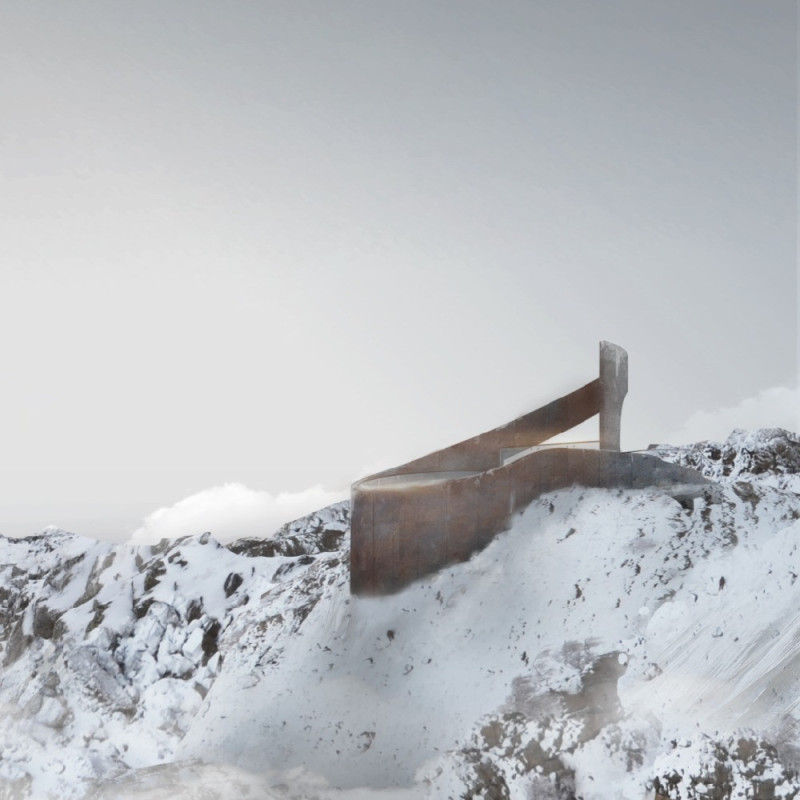5 key facts about this project
The primary function of The Nemrut Volcano Eye is to serve as a visitor center, where guests can explore the geological and cultural significance of the area. The design fosters an immersive experience, allowing visitors to connect with the environment while gaining insights into the local ecosystem and volcanic activity. The structure supports educational programs and social gatherings, further enhancing community engagement.
The project employs a thoughtful combination of materials to achieve its aesthetic and functional goals. Corten steel is used for its weather resistance and ability to blend harmoniously with the earthy tones of the landscape. Glass elements are strategically placed to enhance transparency, providing unobstructed views of the surroundings while maintaining safety. The use of perforated metal for flooring also contributes to the durability of the design, ensuring longevity against the region's climate.
The unique approach of The Nemrut Volcano Eye is evident in its architectural layout. The structure features multiple interconnected platforms that encourage exploration and interaction. Each level offers distinct perspectives, reinforcing a dialogue between architecture and nature. The design prioritizes pathways and connections, allowing seamless movement through the site. Stairs and footbridges are thoughtfully integrated, aligning with the natural contours of the land.
Another distinctive characteristic is the emphasis on sustainability and environmental harmony. The design minimizes the visual footprint through its organic forms, ensuring that the presence of the structure enhances rather than detracts from the natural landscape. This conscious integration aims to inspire a deeper appreciation of the volcanic environment.
The architectural design of The Nemrut Volcano Eye stands as an exemplary model of how to harmonize built environments with their natural surroundings. For those interested in exploring the project further, including architectural plans, sections, and other design elements, a comprehensive presentation provides additional insights into this thoughtful approach to architecture.


























